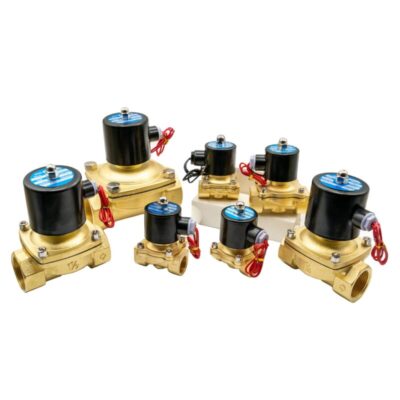Solenoid valves are essential components in many fluid control systems. They function by using an electrical signal to open or close a valve, regulating the flow of fluid through a pipeline. However, solenoid valves can sometimes fail, causing costly downtime and repairs.
Therefore, it is important to understand how to test a solenoid valve to ensure it is working correctly. How to test a solenoid? Let’s check how solenoid valves respond to test pulses.
How to Check if Solenoid is Working: What are Test Pulses?
How do you check a solenoid? Test pulses are used by safety controllers and safety relay units for diagnostic purposes and can be used to detect cross circuits or ensure that the outputs are functioning properly with respect to their switch-off capabilities. The duration of these pulses can vary depending on the manufacturer, with some lasting up to several milliseconds.
How Solenoid Test Pulses Work
Solenoid test pulses are a way to conduct dry checks on individual solenoid valves without altering their current settings. These pulses are weaker than regular ones․
Operators can read the solenoid's current performance on a digital display and detect any circuits that are shorting or crossing.
By sending extremely brief electrical signals to the valve, operators can ensure that the valve is reactive to input and that it reacts quickly to positive and negative jolts. This can improve workplace safety and optimize controlled performance. It also enables proactive maintenance and replacement, which can prevent in-use disasters such as overflows and jams.
What is the Effect of Test Pulses on a Solenoid Valve?
When performing test pulses on FESTO solenoid valves, you can expect to observe some unusual behavior, which is actually normal. If a solenoid valve is connected to a failsafe output, the test pulses used by the safety controller and safety relay units can cause the valve's LED to flicker. This is a deliberate effect that indicates the current is successfully passing through the valve's internal circuitry. If the light fails to flicker, it could indicate a problem with the contacts or wiring. Additionally, you may hear a clicking sound caused by the electromagnetic field and spring moving back and forth, generating friction. This clicking is totally normal.
In some cases, a defective solenoid valve may malfunction or open unexpectedly during the testing phase. If you hear any unusual sounds, such as clunking or movement noise, while the light remains on, it's important to inspect the valve and arrange for a replacement as soon as possible if necessary.
Why Test Solenoid Valves?
Solenoid valves are essential components in hydraulic and pneumatic systems, and they control the flow of fluid or gas through the system. It's crucial to test solenoid valves to ensure they are functioning correctly and within the required performance levels. Here are some reasons why testing solenoid valves is important:
- Safety: Faulty solenoid valves can lead to system failures, which can result in serious accidents or damage to equipment. Testing solenoid valves ensures that they are functioning correctly and can prevent potential safety hazards.
- System performance: Solenoid valves control the flow of fluid or gas through the system, and if they are not working correctly, the system's performance can be compromised. Testing solenoid valves ensures that they are functioning as intended and can help optimize the system's performance.
- Cost savings: Testing solenoid valves can identify potential issues before they turn into costly problems. By detecting and addressing problems early on, you can avoid expensive repairs or replacement of equipment.
- Compliance: Many industries have strict regulations and standards that require regular testing and maintenance of equipment, including solenoid valves. Testing solenoid valves ensures that you comply with industry standards and regulations.
In conclusion, testing solenoid valves is essential to ensure their proper functioning in hydraulic and pneumatic systems. By performing test pulses, technicians can detect any faults or malfunctions in the valves, such as crossed circuits, shorting, or slow/fast reaction times. Identifying and addressing these issues proactively through regular maintenance and replacements can help prevent potential accidents, such as overflows and jams, and improve workplace safety.
Have some questions? Don’t hesitate to contact HAK Pneumatic, since we are always here to help and guide you through the process.

